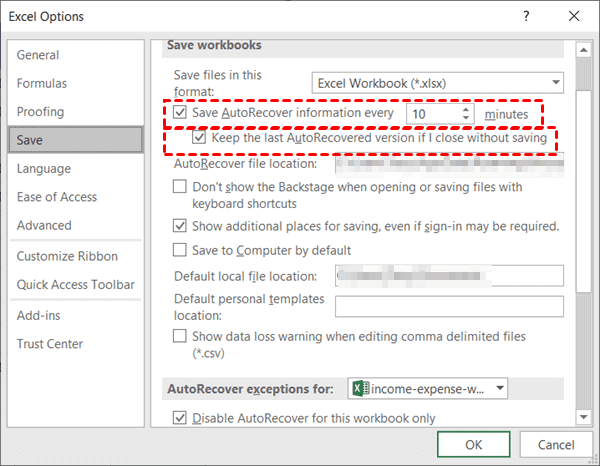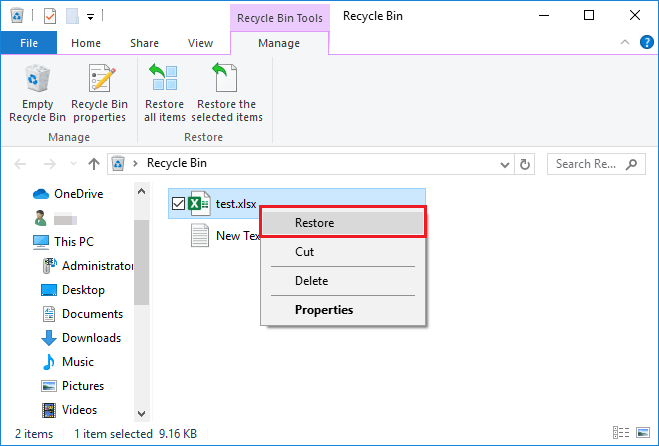Recover Deleted Excel Sheets: A Quick Guide

Accidentally deleting important Excel sheets can be a nightmare for anyone relying on these documents for their daily tasks or business operations. Whether you are dealing with critical financial data, customer lists, or project timelines, losing this information can lead to significant setbacks. Fortunately, modern technology offers several methods to recover deleted Excel sheets, ensuring that you can retrieve your valuable data with a bit of knowledge and patience. In this guide, we'll walk you through the steps to recover deleted Excel files, discuss recovery options, and provide tips to prevent future data loss.
Understanding Excel File Recovery

Before diving into the recovery methods, it's essential to understand how Excel stores data:
- Temporary Files: Excel creates temporary files which can be remnants of your document if it didn't save properly or was corrupted during a crash.
- AutoRecover Feature: Excel has an AutoRecover feature that periodically saves the document, providing a backup in case of an unexpected closure or system crash.
- Local Recycle Bin: Files deleted from your computer are initially moved to the Recycle Bin, from where they can be recovered before the bin is emptied.
- Cloud Storage: If you use cloud services like OneDrive or Google Drive, there might be a backup of your Excel sheet online.
Recovering from the Recycle Bin

The most straightforward recovery method is checking the Recycle Bin:
- Open your Recycle Bin by double-clicking the icon on your desktop.
- Look for your Excel file; if found, right-click and choose 'Restore' to return it to its original location.
🔍 Note: If you've already emptied the Recycle Bin or the file isn't there, proceed to other recovery methods.
Using the AutoRecover Feature

Follow these steps to retrieve your Excel sheet via AutoRecover:
- Open Excel.
- Go to ‘File’ > ‘Info’ > ‘Manage Workbook’ or ‘Manage Versions’ > ‘Recover Unsaved Workbooks’. Here, you might find your lost document.
- If that doesn’t work, check the AutoRecover file location:
- In Excel, click ‘File’ > ‘Options’ > ‘Save’.
- Note the ‘AutoRecover file location’ path, and manually navigate there to look for your document.
Recovering from Temporary Files

Sometimes, Excel saves temporary files when editing or saving:
- Open File Explorer.
- Type
*.tmpin the search box, as Excel often saves temporary files with this extension. - Sort the files by date modified to find recent documents. Open these with Excel to see if it’s your sheet.
Professional Data Recovery Software

If the above methods fail, you might need specialized recovery software:
| Software | Description |
|---|---|
| Recuva | A popular free recovery tool with deep scan capabilities. |
| Stellar Data Recovery | Professional grade recovery with high success rates. |
| EaseUS Data Recovery Wizard | Excellent for recovering lost files with preview options. |

When using recovery software:
- Stop using the drive where your Excel file was stored to prevent data overwriting.
- Choose software with good reviews for recovering Office files.
- Scan in a non-overwriting mode to avoid permanently losing data.
💾 Note: Professional recovery tools can be expensive, so ensure you're using a trusted brand to avoid further complications.
Recovering from Cloud Backups

If your Excel sheet is saved in cloud storage:
- OneDrive: Check the Recycle Bin within OneDrive or the ‘Previous Versions’ tab if versioning is enabled.
- Google Drive: Look in the Trash or use the ‘Manage Revisions’ feature to find older versions of your document.
- Log in to your cloud account, go to the respective section for file recovery or version history, and restore or download your file.
Preventing Future Data Loss

After the recovery process, take steps to safeguard your data:
- Regular Backups: Use automated backup solutions or manually back up your files to external drives or cloud services.
- AutoRecover Settings: Ensure AutoRecover saves frequently; go to ‘File’ > ‘Options’ > ‘Save’ and set a low time interval for saves.
- Version History: Enable version history if using cloud storage for easy rollback to previous document states.
- Permissions and Sharing: Be cautious with document sharing; limit permissions where necessary.
Final Thoughts

Recovering a deleted Excel sheet might seem daunting, but with the right steps and tools, it’s often possible. Remember, the key to success lies in immediate action, regular backups, and understanding the various avenues for file recovery. While data recovery software can be beneficial, prevention through regular backups and cautious file management remains the best defense against data loss. Keep your Excel files organized, secure, and your workflow interruption-free by utilizing these recovery techniques and preventive measures.
Can I recover an Excel sheet deleted from a USB drive?

+
Yes, the same recovery methods apply. Use a recovery tool designed for external drives to increase your chances of success.
What if the Excel file I recovered is corrupted?

+
Try opening the file in a different version of Excel, or use a file repair tool like Microsoft’s own file repair utility or third-party software designed for Excel file recovery.
How long does the AutoRecover keep files?

+
AutoRecover files are typically saved for the duration set in Excel’s options, which can be adjusted. By default, it’s every 10 minutes, but these files are usually only available until the software is properly closed or crashes.



